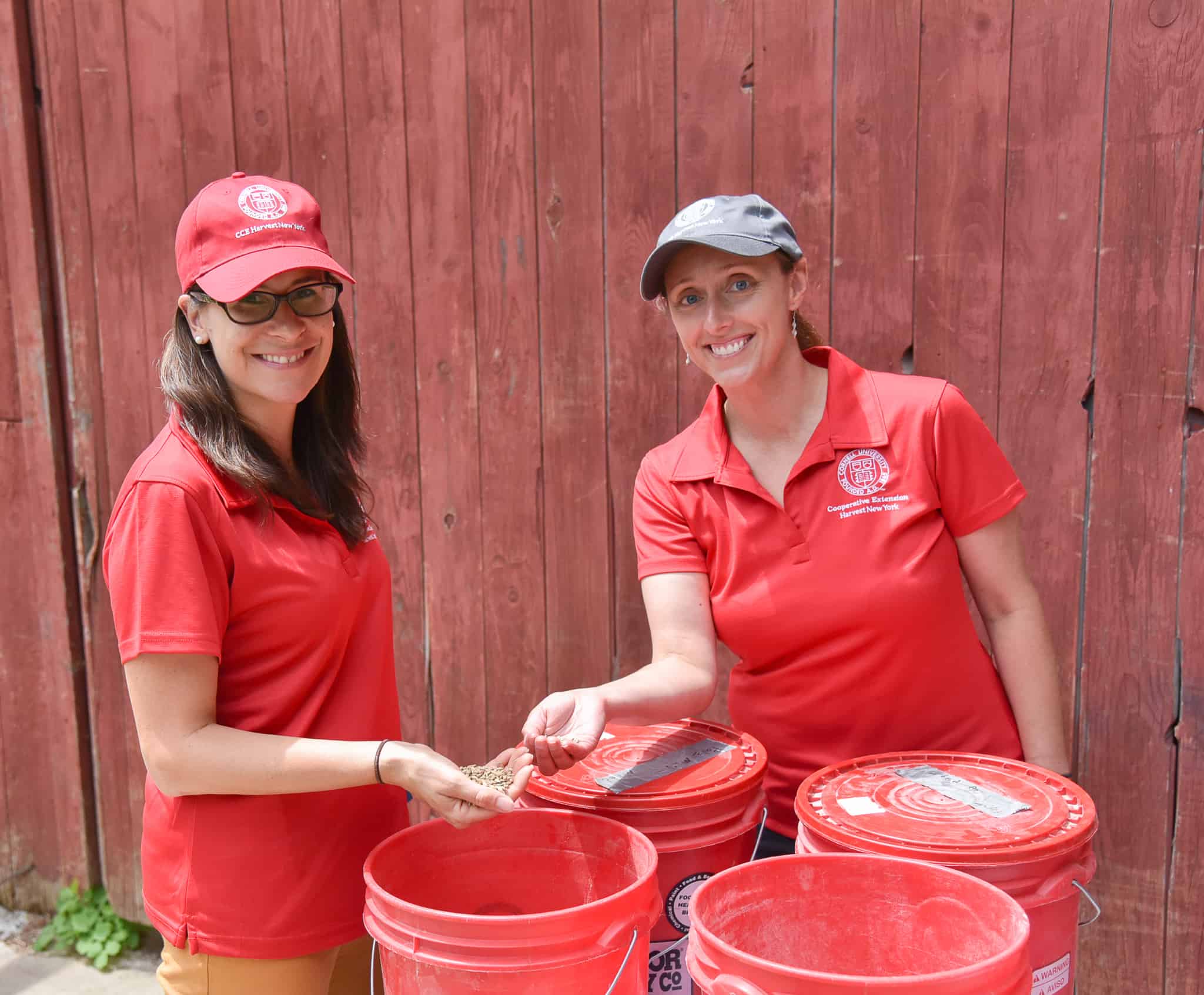Extension Helps NY Brewers, Growers Raise a Pint
Harvest NY Farm-to-Pint tours spotlight Empire State craft beer supply chain.
The essential ingredients of a pint of locally produced New York state craft beer are quite simple: hops, barley, yeast and water. Much more complex, however, is how the supply chain of those elements comes together to create beverages that adhere to New York’s escalating farm brewery regulations.

Taylor and Sons Brewery General Manager Owen Taylor pours a pint during a tasting held his family’s taproom in Salem, New York as part of the Cornell Cooperative Extension Harvest New York Farm-to-Pint Tour. Courtesy of RJ Anderson.
It’s a recipe further challenged by the relative infancy of the farm brewery industry and its explosive growth. Since the introduction of the state’s farm brewery license in 2013, which offered tax benefits and relaxed regulations for breweries using New York-grown ingredients, there are now more than 160 active farm breweries. And while the path to startup has been made easier, there exists significant challenges for farm brewers looking to procure New York-produced ingredients. In addition to lending distinctly local flavors to their beverages, Empire State hops and barley satisfy the state’s mandate that farm-brewed beers contain at least 20 percent New York-grown ingredients – a requirement that jumps to 60 percent in 2019 and 90 percent in 2024.
Helping the industry link and grow a more inclusive supply chain are Cornell Cooperative Extension (CCE) specialists. Examples of CCE efforts were recently on display at a pair of Farm-to-Pint tours that brought together more than 70 New York hop and barley producers, maltsters, brewers and state officials with Cornell and industry researchers.
“By design and per New York state legislation, our craft beer supply chain is a relatively short one,” said event organizer Cheryl Thayer, an agricultural economic development specialist with CCE’s Harvest New York regional agriculture team. “Because of those limitations, it’s imperative that the supply chain stakeholders not only know one another, but understand the intricacies involved in each node of the supply chain.
“We thought a perfect mechanism for this was to bring those stakeholders together and follow the life cycle of a pint of New York state beer,” she added.
Funded by the New York Farm Viability Institute, the bus tours – one held north of Albany in Washington County June 29, the other near Rochester Aug. 4 – each began with a stop at a local hop yard and malting barley field. In addition to hands-on, real-world conversations with the growers, those stops included updates from Cornell College of Agriculture and Life Sciences scientists Gary Bergstrom and David Benscher, who joined CCE crops specialist Mike Stanyard and CCE hops specialist Steve Miller for research-based discussions about ongoing trials and trends.

Harvest New York Agriculture economic specialists Cheryl Thayer and Lindsey Pashow sample malting-grade barley at the Argyle Craft Malt House in Argyle, New York. Courtesy of RJ Anderson.
Each tour also included a visit to a craft malt house.
“Malt house owners are a vital middle link in the craft beer production chain,” said Thayer. “But with the recent reintroduction of malting-grade barley to New York agriculture, they are also the newest additions to the supply chain. Because of that, attendees were very interested in seeing a working malt house in action and spent quite a bit of time picking the maltsters’ brains about their trade and preferences when working with growers and brewers.
Wrapping up each event was a tasting at a farm brewery where the groups networked while sampling beers featuring hops and barley from earlier tour stops.
“The attendees were very appreciative of having a forum where they could absorb new information while making those important new connections,” Thayer said. “The exchange of information and candid discussion about challenges and opportunities currently present in the supply chain was probably the most valuable takeaway for them.
“Along with a lot of people across the state, we at CCE think the craft beer industry has the potential to cultivate emerging market opportunities for growers while simultaneously supporting good agricultural economic development initiatives,” Thayer continued. “That’s why we’re doing all we can to support its continued growth and success. But for those things to happen, the industry needs to develop a strong sense of community and understand the role of each link in the supply chain – and we’ll do everything we can to help make that happen.”

